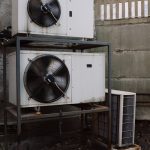How Do You Troubleshoot and Fix Common Smoke Alarm Problems?
Ensuring the functionality of smoke alarms is paramount in safeguarding your home from potential fire hazards. Functional smoke alarms not only alert you to dangers but also provide peace of mind. At Voltfix Electrical, we are dedicated to delivering reliable electrical services, including comprehensive smoke alarm maintenance and repair, to keep your home safe and secure.
Issue 1: Smoke Alarm Beeping Intermittently
An intermittently beeping smoke alarm can be a source of annoyance and worry. This persistent noise can disrupt your daily routine and cause undue stress. The beeping is typically a warning signal indicating that the smoke alarm needs attention. Common causes include a low battery, dust accumulation, or an internal fault. Identifying and addressing the root cause of the beeping is crucial to restore peace in your home and ensure your smoke alarm functions correctly when needed.
Troubleshooting Steps:
- Battery Check: Ensure the battery is properly installed and replace it if necessary.
- Dust and Debris: Clean the smoke alarm to remove any dust or debris that might be triggering the beeping.
- Reset the Alarm: Follow the manufacturer’s instructions to reset the alarm.
Issue 2: Smoke Alarm Not Sounding During Tests
A smoke alarm that fails to sound during a test can compromise your safety by not alerting you in an emergency. Regular testing of your smoke alarm is essential to confirm its operational status. When the alarm doesn’t sound, it may indicate issues such as a dead battery, wiring problems, or the end of the alarm’s life. Ensuring that your smoke alarm is functional is critical to providing the early warning necessary to protect your home and family from fire hazards.
Troubleshooting Steps:
- Battery Replacement: Check and replace the battery.
- Check Wiring: For hardwired alarms, inspect the wiring connections.
- Alarm Replacement: If the alarm is old, consider replacing it with a new one.
Issue 3: False Alarms
False alarms, where the smoke alarm activates without the presence of smoke, can be disruptive and may cause unnecessary panic. These alarms can occur due to improper placement, such as near kitchens or bathrooms, or due to the accumulation of dust and insects inside the alarm. High-sensitivity settings or environmental factors like steam and humidity can also trigger false alarms. Regularly addressing these factors can help reduce the frequency of false alarms and maintain a reliable warning system in your home.
Troubleshooting Steps:
- Placement Issues: Ensure the alarm is not placed near kitchens or bathrooms where steam can trigger false alarms.
- Sensitivity Adjustment: Adjust the sensitivity settings if applicable.
- Clean the Alarm: Regular cleaning can prevent false alarms caused by dust or insects.
Issue 4: Smoke Alarm Chirping
A chirping sound from your smoke alarm usually indicates a low battery or other issues that need immediate attention. This repetitive noise is a built-in alert to ensure you take prompt action to maintain the alarm’s functionality. A chirping smoke alarm can also indicate that the alarm is nearing the end of its life or has an internal malfunction. Addressing the chirping promptly ensures your smoke alarm remains a reliable component of your home safety system.
Troubleshooting Steps:
- Replace the Battery: Replace with a fresh battery and ensure it is properly installed.
- Check the Expiry Date: Smoke alarms have a limited lifespan, usually 10 years.
- Reset the Alarm: Perform a reset if the chirping persists.
Issue 5: Smoke Alarm Light Indicator Issues
Problems with the smoke alarm’s light indicators, such as a constantly flashing red light, can be confusing and concerning. These light signals are designed to convey specific information about the alarm’s status, such as a low battery, alarm activation, or malfunction. Understanding these indicators through the user manual can help you diagnose the issue. Persistent light issues may require more than a simple battery change, potentially indicating a need for professional assessment.
Troubleshooting Steps:
- Consult the Manual: Refer to the user manual to understand the meaning of the light indicators.
- Battery Replacement: Sometimes, light issues are battery-related.
- Contact Professional Help: If unsure, contact Voltfix Electrical for professional assistance.
Issue 6: Smoke Alarm Going Off When Cooking
Smoke alarms activating while cooking, even without a fire or significant smoke, can be a common and frustrating issue. This often happens due to the alarm’s placement being too close to the kitchen or due to inadequate ventilation. Steam, smoke, and cooking fumes can easily trigger the alarm, causing unnecessary interruptions. Proper placement and ensuring good kitchen ventilation can help mitigate this issue and reduce the frequency of false alarms during cooking.
Troubleshooting Steps:
- Relocate the Alarm: Move the smoke alarm farther from the kitchen area.
- Use Exhaust Fans: Ensure proper ventilation while cooking to reduce smoke.
- Install a Heat Detector: Consider installing a heat detector in the kitchen instead of a smoke alarm.
Issue 7: Smoke Alarm Not Responding to Smoke
When a smoke alarm fails to activate in the presence of smoke, it poses a serious risk to home safety. This failure can prevent early detection of fires, leading to delayed responses and increased danger to inhabitants and property. The underlying causes can range from simple battery issues to more complex sensor malfunctions. It’s crucial to address this problem promptly to ensure that your smoke alarm provides the necessary protection. Regular testing and maintenance are essential practices to verify that the smoke alarm responds appropriately to smoke.
Troubleshooting Steps:
- Battery Check: Ensure the battery is working.
- Clean the Alarm: Dust and debris might block the smoke sensor.
- Test with Real Smoke: Carefully test with a small amount of real smoke to see if the sensor is working.
- Replace the Alarm: If it still doesn’t respond, it might be time to replace the unit.
Issue 8: Continuous Beeping After Battery Change
If your smoke alarm continues to beep even after changing the battery, it can be particularly frustrating. This persistent beeping often signals an underlying issue that requires further investigation. It might be due to residual charge within the alarm, dirty battery contacts, or a deeper internal fault. Addressing these issues involves a systematic approach to ensure that the smoke alarm returns to its proper functioning state, free from false beeps that can cause distress and confusion.
Troubleshooting Steps:
- Reset the Alarm: Follow the reset instructions from the manual.
- Check for Residual Charge: Remove the battery and press the test button for 15 seconds to drain any residual charge.
- Inspect Battery Contacts: Ensure the battery contacts are clean and make proper contact.
- Replace the Alarm: If the issue persists, the alarm may be faulty and need replacement.
Ensuring Safety with Voltfix Electrical
At Voltfix Electrical, we understand the importance of maintaining functional smoke alarms to ensure your home’s safety. Our expertise, reliability, and customer-centric approach make us the ideal choice for all your smoke alarm maintenance and repair needs. Don’t compromise on your safety—contact Voltfix Electrical today for professional smoke alarm services to keep your home protected.





